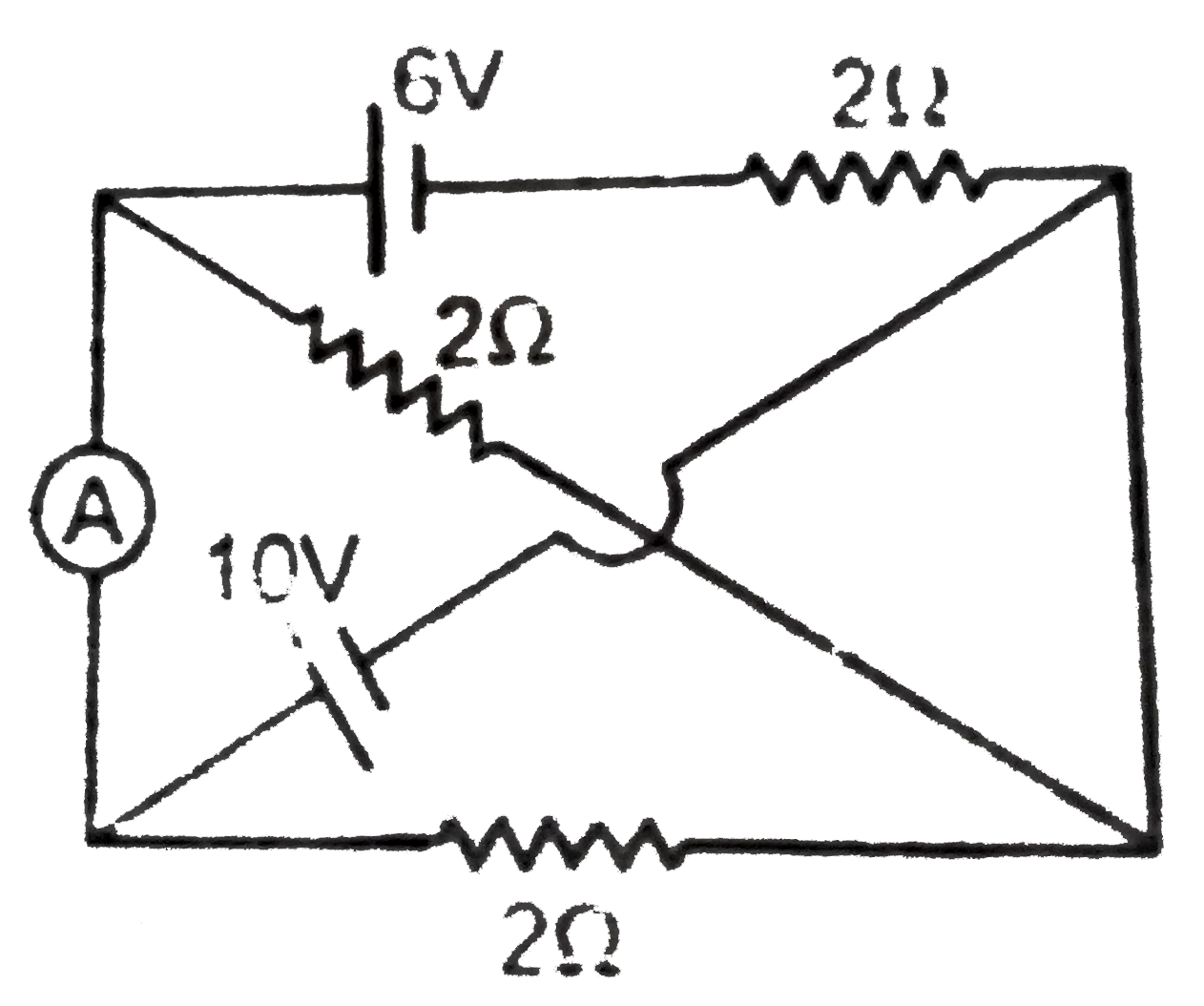By mistake, a voltmeter is connected in series and an ammeter is connected in parallel, with a resistance in an electrical circuit. What will happen to the instruments?
Both ammeter and voltmeter will be damaged
Neither the ammeter nor the voltmeter will be damaged
Only the ammeter will be damaged
Only the voltmeter will be damaged
The correct Answer is:C
Step-by-Step Solution
1. Understanding the Configuration:
- We have a resistance (R) in an electrical circuit.
- A voltmeter is mistakenly connected in series with this resistance.
- An ammeter is connected in parallel with the same resistance.
2. Analyzing the Voltmeter Connection:
- A voltmeter is designed to measure the potential difference across two points in a circuit.
- It has a very high internal resistance (R_v). When connected in series, the total resistance in the circuit increases significantly.
- Due to this high resistance, the current (I) flowing through the circuit becomes very low (I_min).
- The voltmeter will measure the potential difference across the resistance, and since it is designed for this purpose, it will provide a reading without being damaged.
3. Analyzing the Ammeter Connection:
- An ammeter is designed to measure the current flowing through a circuit and has a very low internal resistance (R_a).
- When connected in parallel with the resistance, the current will divide between the resistance and the ammeter.
- Since the ammeter has low resistance, it will allow a small amount of current to flow through it.
- However, because the overall current in the circuit is low (due to the high resistance of the voltmeter in series), the ammeter will also not show a significant reading and will not be damaged.
4. Conclusion:
- Both the voltmeter and the ammeter will operate without damage in this configuration.
- The voltmeter will show a reading corresponding to the potential difference across the resistance, while the ammeter will show a very low reading due to the low current in the circuit.
Final Answer:
Neither the ammeter nor the voltmeter will be damaged in this configuration.
---
- We have a resistance (R) in an electrical circuit.
- A voltmeter is mistakenly connected in series with this resistance.
- An ammeter is connected in parallel with the same resistance.
- A voltmeter is designed to measure the potential difference across two points in a circuit.
- It has a very high internal resistance (R_v). When connected in series, the total resistance in the circuit increases significantly.
- Due to this high resistance, the current (I) flowing through the circuit becomes very low (I_min).
- The voltmeter will measure the potential difference across the resistance, and since it is designed for this purpose, it will provide a reading without being damaged.
- An ammeter is designed to measure the current flowing through a circuit and has a very low internal resistance (R_a).
- When connected in parallel with the resistance, the current will divide between the resistance and the ammeter.
- Since the ammeter has low resistance, it will allow a small amount of current to flow through it.
- However, because the overall current in the circuit is low (due to the high resistance of the voltmeter in series), the ammeter will also not show a significant reading and will not be damaged.
- Both the voltmeter and the ammeter will operate without damage in this configuration.
- The voltmeter will show a reading corresponding to the potential difference across the resistance, while the ammeter will show a very low reading due to the low current in the circuit.
Neither the ammeter nor the voltmeter will be damaged in this configuration.
Topper's Solved these Questions
- CURRENT ELECTRICITYBOOK - DC PANDEY ENGLISHCHAPTER - CURRENT ELECTRICITYEXERCISE - B. Assertion and reason
18 Videos
- CURRENT ELECTRICITYBOOK - DC PANDEY ENGLISHCHAPTER - CURRENT ELECTRICITYEXERCISE - Match the columns
4 Videos
- CURRENT ELECTRICITYBOOK - DC PANDEY ENGLISHCHAPTER - CURRENT ELECTRICITYEXERCISE - Check point
70 Videos
- COMMUNICATION SYSTEMBOOK - DC PANDEY ENGLISHCHAPTER - COMMUNICATION SYSTEMEXERCISE - Subjective
11 Videos
- ELECTROMAGNETIC INDUCTIONBOOK - DC PANDEY ENGLISHCHAPTER - ELECTROMAGNETIC INDUCTIONEXERCISE - Medical entrances gallery
25 Videos
Similar Questions
Fuse is connected in an electric circuit.
View SolutionWhy is ammeter connected in series and voltmeter in parallel in the circuit?
View SolutionWhich statement/statement is/are correct?
1. An ammeter is connected in series in a circuit and a voltmeter is connected in parallel.
2. An ammeter has a high resistance.
3. A voltmeter has a low resistance.
View Solution(A) : An ammeter is connected in series in the circuit.
(R) : An ammeter is a high resistance galvanometer.
View SolutionAssertion : Voltmeter is connected in parallel with the circuit
Reason : Resistance of a voltmeter is very large.
View SolutionAn ideal ammeter is connected in a circuit as shown in circuit diagram. What will be the reading of ammeter (in S.I units)

View Solutionn equal resistors are first connected in series and then connected in parallel. What is the ratio of the maximum to the minimum resistance ?
View SolutionTwo resistances R and 2R are connected in parallel in an electric circuit. The thermal energy developed in R and 2R are in the ratio
View SolutionA battery of electro motive force E is connected in series with a resistance R and a voltmeter. An ammeter is connected in parallel with the battery.
View SolutionAn ammeter is always connected is series in a circuit because........
View Solution
